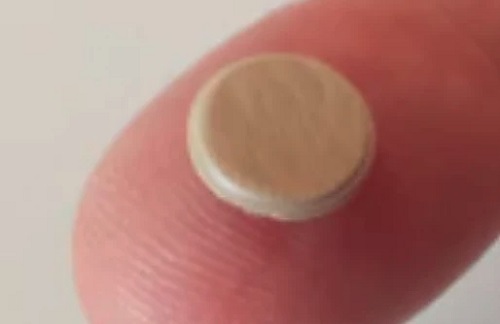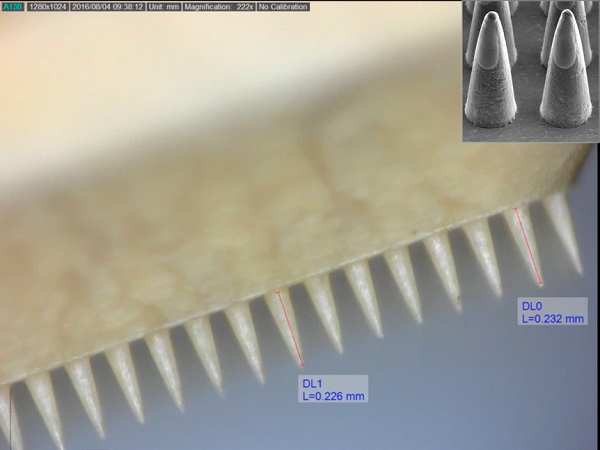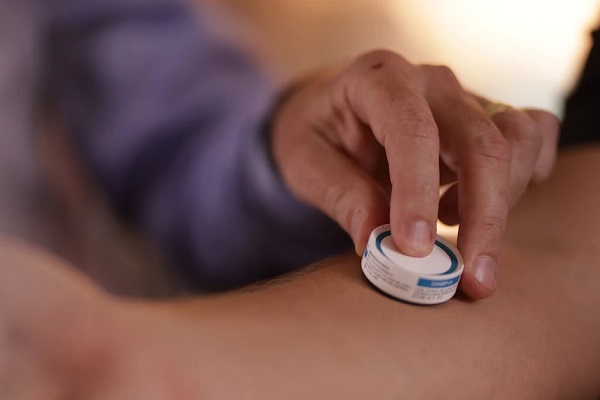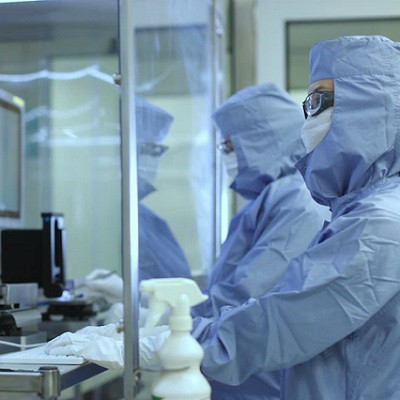A vaccine patch developed by Vaxxas is designed to be applied to the skin and removed after 10 seconds, Vaxxas' head of medical device and process engineering Michael Junger told ABC Radio Brisbane.
He said the patch's ability to be distributed without refrigeration, and with simple administration, could see developing countries able to access and deliver life-saving vaccinations.
"We've got a very small plastic patch, which is about nine millimetres in diameter, and on the surface of that patch are between 1,200 and 3,000 tiny micro-scale projections," Mr Junger said.
"When you touch them with your finger they feel like a nail file. They're very, very small.
"We're working on a scale that's really hard to imagine.

The patch is just nine millimetres in diameter.
The thousands of minuscule projections are coated with the vaccine, which is dried onto the tips. These then pierce the surface of the skin and deliver the vaccine.
"It's a much more efficient way to deliver a vaccine as there are abundant immune cells just under the surface of the skin, as opposed to intramuscularly, as they do with injections now," Mr Junger said.
"There is a sensation because we have to apply the patch at speed to breach the skin with such a dense array."

A close up of some of the thousands of micro projections on the patch that are coated in a vaccine.
While the technology has been used in other applications, it is the first time it would be used to deliver vaccines.
"Commercially, there is one product that's used to treat migraines. It's a much larger patch but the same principles apply," Mr Junger said.
"The technology has been around for about 20 years, but the ability to manufacture components on such a small scale it's only in the last few years we've had the ability to be able to do that."
Local study participants needed
Mr Junger said the hope was that the technology could be used to administer every kind of vaccine, including those for COVID-19.
"We're working with a variety of vaccines at the moment — influenza, measles rubella, polio," Mr Junger said.
He said the simple administration of the patch and its ability to be transported without refrigeration could have significant health benefits across the world.

The patch has to be applied at speed to penetrate the skin but feels like being flicked by a nail.
But in order to get the device across the line, it needs to undergo a number of clinical studies, one of which is being conducted with the University of the Sunshine Coast.
"We are involved in many clinical studies at the moment, using the device, and these are what's called phase one clinical studies for many different vaccines — just to prove the safety and efficacy of that before we move on," Mr Junger said.
"We're enrolling for a study in measles rubella with the University of the Sunshine Coast. However, finding the right people for the study has proven difficult, Mr Junger said.
The study is open to people 18-50 who are local to Brisbane and meet the criteria.
Mr Junger said if the studies were successful and passed the standard of the regulatory authorities, the technology could be in use within as little as two years.
"Who knows what will happen, but we are making a big push to manufacture in Queensland and we recently received some government funding … to allow us to buy the equipment to build that first manufacturing line here," Mr Junger said.
"I think, given the importance of the product it would hopefully be manufactured all over the world, but licensed back to Vaxxas as an Australian company."
In a statement, Australian Medical Association Queensland president Professor Chris Perry said the Queensland-first technology might assist vaccine hesitant patients "which would be a great step in getting the world vaccinated against COVID-19".
"If and when the Therapeutic Goods Administration approves this technology for use in Australia, AMA Queensland will talk to our members about its use."
Read the original article on Australian Broadcasting Corporation (ABC).
